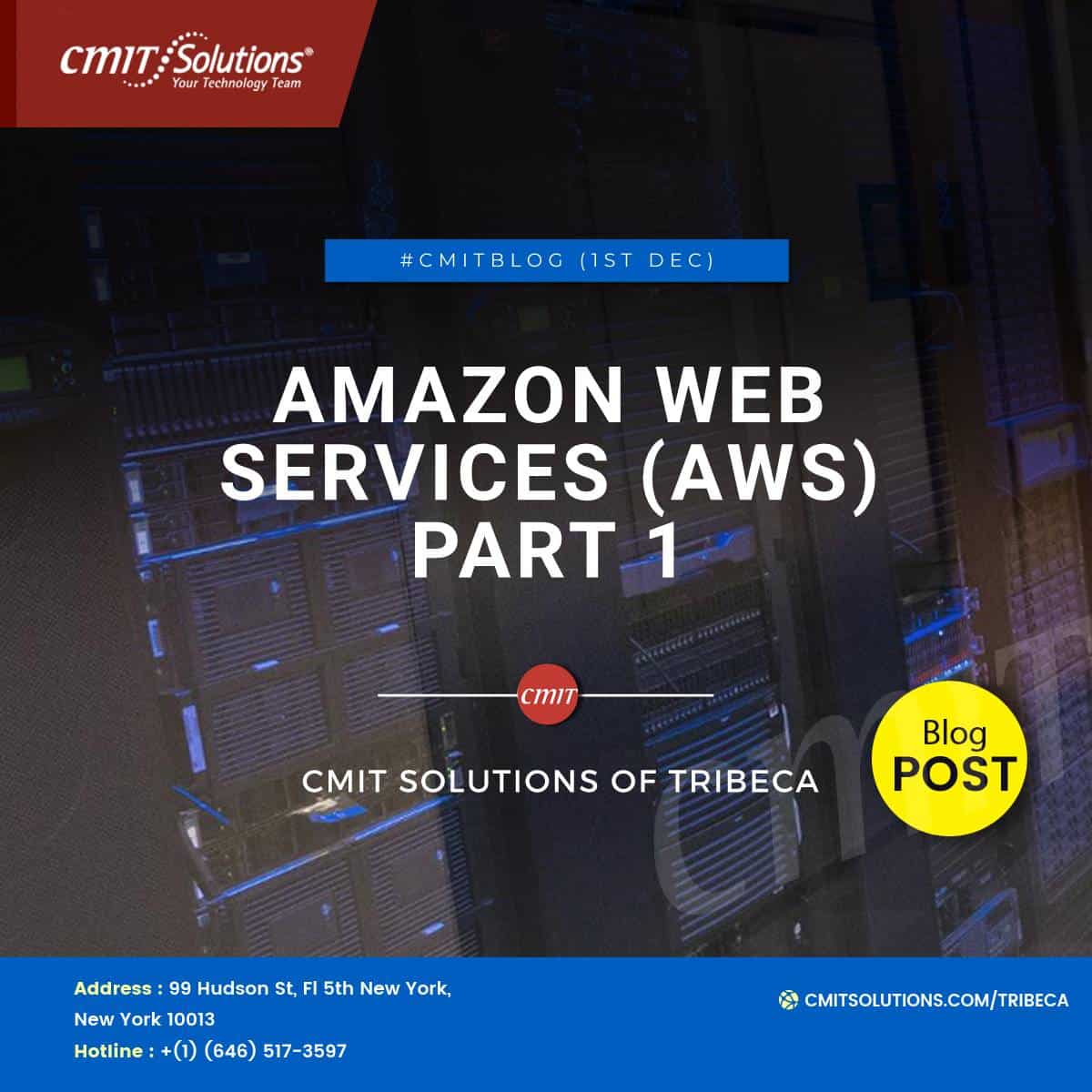AWS (Amazon Web Services) is an extensive, advancing cloud computing platform given by Amazon that incorporates a combination of infrastructure as a service (IaaS), platform as a service (PaaS) and packaged software as a service (SaaS) offerings. AWS services can offer organization tools, for example, compute power, database storage and content delivery services.
AWS launched in 2006 from the internal infrastructure that Amazon.com build to deal with its online based retail activities. AWS was one of the first companies to present a pay-as – you – go cloud computing that scales to provide clients with compute, storage or throughput as needed
AWS offers various tools and answers for enterprises and software developers that can be utilized in data centers in up to 190 nations. Groups such as government offices, education institutions, nonprofits and private organizations can utilize AWS services.
How AWS works
AWS is separated into different services; each can be configured in different ways based on the user’s needs. Users should be able to see configuration options and individual server maps for an AWS service.
More than 100 services comprise the Amazon Web Services portfolio, including those for compute, databases, infrastructure management, application development and security. These services, by category, include:
- Compute
- Storage databases
- Data management
- Migration
- Hybrid cloud
- Networking
- Development tools
- Management
- Monitoring
- Security
- Governance
- Big data management
- Analytics
- Artificial intelligence (AI)
- Mobile development
- Messages and notification
Availability
Amazon Web Services provides services from dozens of data centers spread across availability zones (AZs) in regions across the world. An AZ is a location that contains multiple physical data centers. A region is a collection of AZs in geographic proximity connected by low-latency network links.
A business will choose one or multiple availability zones for a variety of reasons, such as compliance and proximity to end customers. For example, an AWS customer can spin up virtual machines (VMs) and replicate data in different AZs to achieve a highly reliable infrastructure that is resistant to failures of individual servers or an entire data center.
Amazon Elastic Compute Cloud (EC2) is a service that provides virtual servers — called EC2 instances — for compute capacity. The EC2 service offers dozens of instance types with varying capacities and sizes, tailored to specific workload types and applications, such as memory-intensive and accelerated-computing jobs. AWS also provides an Auto Scaling tool to dynamically scale capacity to maintain instance health and performance.
Storage
Amazon Simple Storage Service (S3) gives adaptable object storage for data backup, collection and analytics. IT proficient stores information and documents as S3 objects – which can run up to 5 gigabytes (GB) – inside S3 buckets to keep them coordinated. A business can set aside cash with S3 through its Infrequent Access storage tier or by utilizing Amazon Glacier for long term cold storage
Amazon Elastic Block Store gives block-level storage volumes for persistent data storage when utilizing EC2 cases. Amazon Elastic File System offers managed cloud-based file storage
A business can likewise move information to the cloud via means storage transport devices, such as AWS Snowball and Snowmobile, or use AWS Storage Gateway to empower on-premises applications to access cloud information.
Databases, data management
The Amazon Relational Database Service — which includes options for Oracle, SQL Server, PostgreSQL, MySQL, MariaDB and a proprietary high-performance database called Amazon Aurora — provides a relational database management system for AWS users. AWS also offers managed NoSQL databases through Amazon DynamoDB.
An AWS customer can use Amazon ElastiCache and DynamoDB Accelerator as in-memory and real-time data caches for applications. Amazon Redshift offers a data warehouse, which makes it easier for data analysts to perform business intelligence (BI) tasks.
Migration, hybrid cloud
AWS incorporates different tools and services intended to assist clients migrate applications, databases, servers and data onto its public cloud. The AWS Migration Hub gives a location to monitor and manage relocations from on premises to the cloud. Once in the cloud, EC2 Systems Manager helps an IT group configure on-premises servers and AWS instances.
Amazon additionally has partnerships with a few technology vendors that ease hybrid cloud deployments. VMware Cloud on AWS brings software characterized data center technology from VMware to the AWS cloud. Red Hat Enterprise Linux for Amazon EC2 is the result of another partnership, stretching out Red Hat’s working framework to the AWS cloud.
Networking
An Amazon Virtual Private Cloud (Amazon VPC) gives an administrator control over a virtual network to use an isolated section of the AWS cloud. AWS automatically provisions new resources within a VPC for extra protection.
Admins can balance network traffic with the Elastic Load Balancing (ELB) service, which includes the Application Load Balancer and Network Load Balancer. AWS also provides a domain name system called Amazon Route 53 that routes end users to applications.
An IT professional can establish a dedicated connection from an on-premises data center to the AWS cloud via AWS Direct Connect.
Developer tools
A developer can take advantage of AWS command-line tools and software development kits (SDKs) to deploy and manage applications and services. This includes:
- The AWS Command Line Interface, which is Amazon’s proprietary code interface.
- A developer can use AWS Tools for PowerShell to manage cloud services from Windows environments.
- Developers can use AWS Server less Application Model to simulate an AWS environment to test Lambda functions.
AWS SDKs are available for a variety of platforms and programming languages, including Java, PHP, Python, Node.js, Ruby, C++, Android and iOS.
Amazon API Gateway enables a development team to create, manage and monitor custom application program interfaces (APIs) that let applications access data or functionality from back-end services. API Gateway manages thousands of concurrent API calls at once.
AWS also provides a packaged media transcoding service — Amazon Elastic Transcoder — and a service that visualizes workflows for microservices-based applications — AWS Step Functions.
A development team can also create continuous integration and continuous delivery pipelines with services like:
- AWS CodePipeline
- AWS CodeBuild
- AWS CodeDeploy
- AWS CodeStar
A developer can also store code in Git repositories with AWS CodeCommit and evaluate the performance of micro services-based applications with AWS X-Ray.
Management and monitoring
An admin can manage and follow cloud resource configuration through AWS Config and AWS Config Rules. Those tools, alongside AWS Trusted Advisor, can help an IT group keep away from inappropriately arranged and unnecessarily costly cloud resource deployments.
AWS provides a few automation tools in its portfolio. An administrator can automate infrastructure provisioning through AWS CloudFormation layouts, and furthermore use AWS OpsWorks and Chef to mechanize foundation and framework arrangements.
An AWS client can monitor resource and application health with Amazon CloudWatch and the AWS Personal Health Dashboard, just as use Amazon web services (AWS) CloudTrail to hold client movement and API calls for evaluating.





